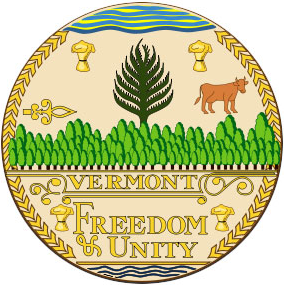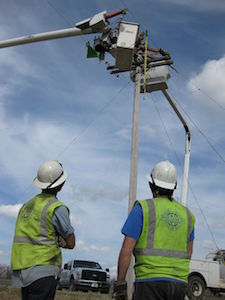
Fast, affordable Internet access for all.

Current lawmakers in the Vermont House have rapidly advanced H 513, a bill that addresses both policy and funding hurdles in an attempt to expand broadband throughout the state. After a vote of 139 - 2, the bill went on to the Senate on March 26th.
Looking at Local Models
H 513 recognizes that more than a quarter of the state’s premises don’t have access to broadband speeds as defined by the FCC, 25 Megabits per second (Mbps) download and 3 Mbps upload. The state’s Department of Public Service, which assembled the data, also determines that almost a fifth of premises can’t obtain speeds of 10 Mbps / 1 Mbps. With so many rural communities hurting for access to fast, affordable, reliable connectivity, state lawmakers are anxious to find tools to expand broadband across Vermont.
Legislators note in the language of H 513 that they believe the FCC’s “light-touch” approach toward expansion of broadband:
“…does little, if anything, to overcome the financial challenges of bringing broadband service to hard-to-reach locations with low population density. However, it may result in degraded broadband quality of service.”
H 513 goes on to acknowledge that grassroots approaches that use local knowledge and support will be the most successful in Vermont.
Lawmakers and their staff have lauded ECFiber as one model that works in a place like Vermont, where many smaller communities can pool their resources and work together to develop a regional network. As the Communications Union District has developed over the years and dealt with funding challenges head-on, it has become apparent that access to capital is one of the most difficult hurdles to overcome.
Funding for Innovation
 In order to help local projects, H 513 will establish the Broadband Innovation Grant Program within the Department of Public Service (DPS) and the Broadband Expansion Loan Program within the Vermont Economic Development Authority (VEDA).
In order to help local projects, H 513 will establish the Broadband Innovation Grant Program within the Department of Public Service (DPS) and the Broadband Expansion Loan Program within the Vermont Economic Development Authority (VEDA).
The grants will be used for feasibility studies and are limited to unserved and underserved areas. Municipalities, nonprofit organizations, cooperatives, and for-profit entities can apply for the grants that are limited to $60,000. The number of electric distribution utilities that can obtain the grants cannot exceed two and the bill also directs DPS to study the issue of electric companies as broadband providers. A report on the issue is due on January 1, 2020.
Loans from VEDA will be distributed for infrastructure and also directed at unserved and underserved communities. The limit for loans is $1.8 million and loan amounts can be as high as 90 percent of the project cost. Loans can apply to new projects or the expansion of existing networks. The same types of entities are eligible to borrow and they do not have to begin repayment for up to two years. The program has the authority to loan out a total of $10.8 million.
Rep. Tim Berlin, Chair of the House Energy and Technology Committee, the group that developed the bill, commented on the reasons for the optional 2-year deferment:
“What they are doing is stringing fiber, they are trying to sign up subscribers and there is very little revenue coming into those entities,” he said. “That’s very difficult financing to find from a bank or from the capital markets.”
The bill also requires the appropriate state administrators to examine the issue of general obligation bonds as a way to fund capital improvements needed for networks. The Secretary of Administration is expected to make a report by the end of 2019.
Policy Changes, Different Perspectives
Along with financial assistance, H 513 will make practical changes in the law to encourage more broadband development. The legislation directs the Public Utilities Commission (PUC) to revise pole attachment rules to accommodate one touch make ready policies. Several requirements to an amended rule are included in the language of the statute.
 Electric cooperatives in Vermont will no longer be barred from receiving financing from the Rural Utilities Service for nonelectric activities when H 513 passes.
Electric cooperatives in Vermont will no longer be barred from receiving financing from the Rural Utilities Service for nonelectric activities when H 513 passes.
The bill also gives municipalities the authority to use municipal revenue bonds to develop infrastructure for public-private partnerships. H 513’s language states that a private sector partner could own, operate, or manage the network but must guarantee the bond and be responsible for the debt service.
As with other bills this session, the minimum threshold speed for projects is 25 Mbps / 3 Mbps, the FCC’s standard for broadband. While this speed is adequate for today’s households’ uses for Internet access and multiple devices, we’d prefer seeing state funds directed toward networks that provide higher capacity connections, especially upload speeds. Dedicating state dollars toward 100 Mbps symmetrical networks would be an improvement that would extend the useful life of the equipment lighting fiber networks and serving the ever-increasing needs of households and businesses.
Vermont Public Interest Research Group's director of communications and technology Zach Tomanelli:
"VPIRG believes jumpstarting community-owned broadband efforts is the key to addressing Vermont’s connectivity issues and we’re hopeful that the reforms contained in H.513 will do that.”
Read the text of H 513 and take a look at the bill summary prepared by House Staff.
Image of the Vermont State House by Jonathanking CC BY-SA 3.0 via Wikimedia Commons.
